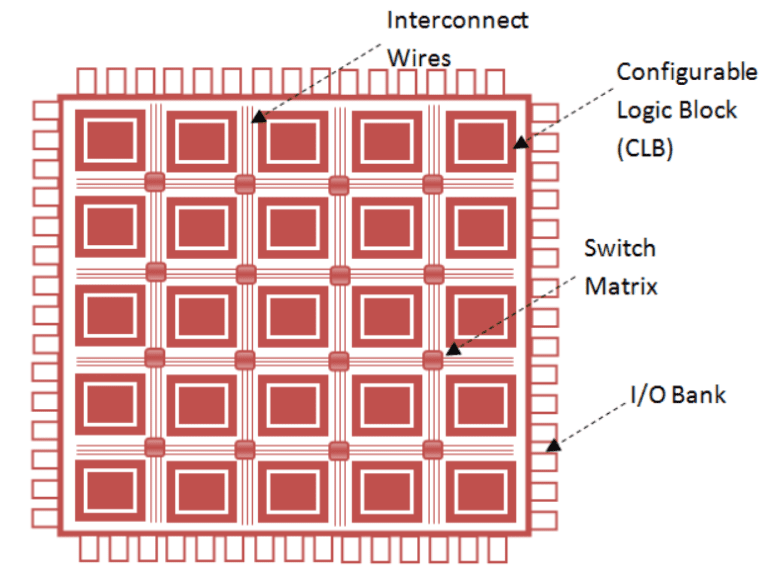TL;DR:
- Field Programmable Gate Arrays (FPGAs) offer unparalleled flexibility and customization in integrated circuits.
- FPGAs are semiconductor devices that can be configured and tailored after manufacturing, providing users with the ability to design circuits according to their specific needs.
- FPGAs find applications in various industries, such as the energy sector, automotive, aerospace, computer vision, data centers, real-time systems, and ASIC design.
- They offer advantages like low latency, cost-effectiveness, power efficiency, parallelism, and integration of AI capabilities.
- FPGAs can be used for accelerating AI workloads, training machine learning models, handling big data, analyzing video streaming, conducting financial computations, and enhancing databases.
- Challenges include programming complexity, limited implementation, cost, and lack of readily available ML libraries.
Main AI News:
Field Programmable Gate Arrays (FPGAs) are revolutionizing the business landscape by providing unparalleled flexibility and customization in the realm of integrated circuits. Unlike traditional chips, FPGAs can be configured and tailored after production, making them ideal for a wide range of applications. These semiconductor devices consist of programmable logic blocks and interconnect, empowering users to design circuits that cater to their specific needs.
FPGAs boast an array of advantages over other solutions like Graphics Processing Units (GPUs) when it comes to AI applications. While GPUs excel in parallel processing, FPGAs offer a unique blend of hardware customization and integrated AI capabilities. With the ability to mimic the behavior of GPUs or Application-Specific Integrated Circuits (ASICs), FPGAs prove their mettle in the rapidly evolving AI landscape.
The versatility of FPGAs finds applications in various industries, enabling breakthrough advancements in multiple domains. Let’s delve into some key areas where FPGAs are leaving their mark.
- Energy Industry: FPGAs are revolutionizing smart power grid technology, enhancing performance and scalability while minimizing power consumption. In transmission and distribution substations, where optimal operation is paramount, FPGAs play a vital role in establishing efficient power networks.
- Enhanced Automotive Experiences: Original Equipment Manufacturers (OEMs) and suppliers are leveraging Microsemi FPGAs to create cutting-edge safety applications for vehicles. From cruise control and blind spot warning to collision avoidance, FPGAs enable new avenues for innovation. Moreover, they provide crucial cybersecurity features like information assurance, anti-tampering mechanisms, and hardware security, ensuring a safer driving experience. Additionally, error-corrected memory and low static power contribute to the dependability and reliability of these FPGA-based solutions.
- Aerospace and Defense: Harsh environments demand robust and reliable solutions. Industrial manufacturing companies cater to this need by offering radiation-hardened and radiation-tolerant FPGAs. These space-grade FPGAs meet the stringent performance, reliability, and lifespan requirements of aerospace and defense applications. Their flexibility surpasses traditional ASIC implementations, making them ideal for processing-intensive space systems.
- Computer Vision Systems: In today’s era of computer vision systems, FPGA-based solutions are indispensable in devices such as video surveillance cameras, robots, and more. These systems rely on FPGAs to enable appropriate interaction between devices and humans based on factors like position, surroundings, and facial recognition capabilities.
- Data Centers: The advent of the Internet of Things (IoT) and big data has led to an exponential surge in data acquisition and processing. FPGAs are gaining traction in data centers due to their ability to accelerate processing, provide design flexibility, and offer hardware-based security against software vulnerabilities. With the rising costs of physical space, the inclusion of more servers is no longer a sustainable solution. FPGAs bridge this gap by delivering low-latency, secure, and flexible computational capacity.
- Real-Time Systems: FPGAs shine in real-time systems where response time is critical. Unlike conventional CPUs with unpredictable response times, FPGAs provide precise triggering accuracy, making them indispensable in critical applications.
- ASIC Design: FPGAs play a crucial role in ASIC development. By facilitating the construction and testing of prototypes, designers can identify and rectify errors before embarking on the intricate process of integrated circuit creation. This iterative approach saves time and simplifies the complex task of designing ASICs.
- FPGA-based Acceleration as a Service: Harnessing the power of FPGA-based systems, businesses can now access FPGA accelerators through innovative services such as Acceleration as a Service (AaaS). Customers can leverage FPGAs to expedite various workloads, including machine learning model training, big data handling, video streaming analysis, financial computations, and database enhancement. Leading companies in the industry, like Intel and Microsoft, are actively engaged in delivering FPGA-powered cloud services, opening new frontiers for AI workload acceleration.
While FPGAs offer unparalleled benefits, there are certain challenges to consider. Programming FPGAs requires expertise, and a shortage of experienced programmers can hinder their widespread adoption. Implementing FPGA-based solutions for AI applications is a complex task that only a few companies have ventured into, with GPUs and CPUs remaining the more accessible choice for many developers. Additionally, the cost associated with reprogramming circuits can be high for small-scale projects, making FPGA-based solutions a potentially expensive endeavor. Furthermore, the limited availability of machine learning libraries tailored for FPGAs poses a challenge for developers seeking out-of-the-box support.
Despite these challenges, the undeniable advantages of FPGAs make them an enticing option for businesses aiming to capitalize on the power of AI. With their low latency, cost-effectiveness, power efficiency, parallelism, and seamless integration of AI capabilities, FPGAs are poised to transform the landscape of deep learning and artificial intelligence.
Conclusion:
The emergence of Field Programmable Gate Arrays (FPGAs) signifies a transformative shift in the market. The ability to customize and tailor integrated circuits after manufacturing empowers businesses to design circuits that meet their specific requirements. The integration of AI capabilities further enhances the value proposition of FPGAs, making them an appealing choice for industries seeking high-performance and adaptable solutions. However, challenges related to programming complexity and implementation may slow down widespread adoption. Nonetheless, the market is witnessing increased interest in FPGA-based solutions, driven by their unique advantages and the potential for accelerated growth and innovation in the realm of deep learning and artificial intelligence.

